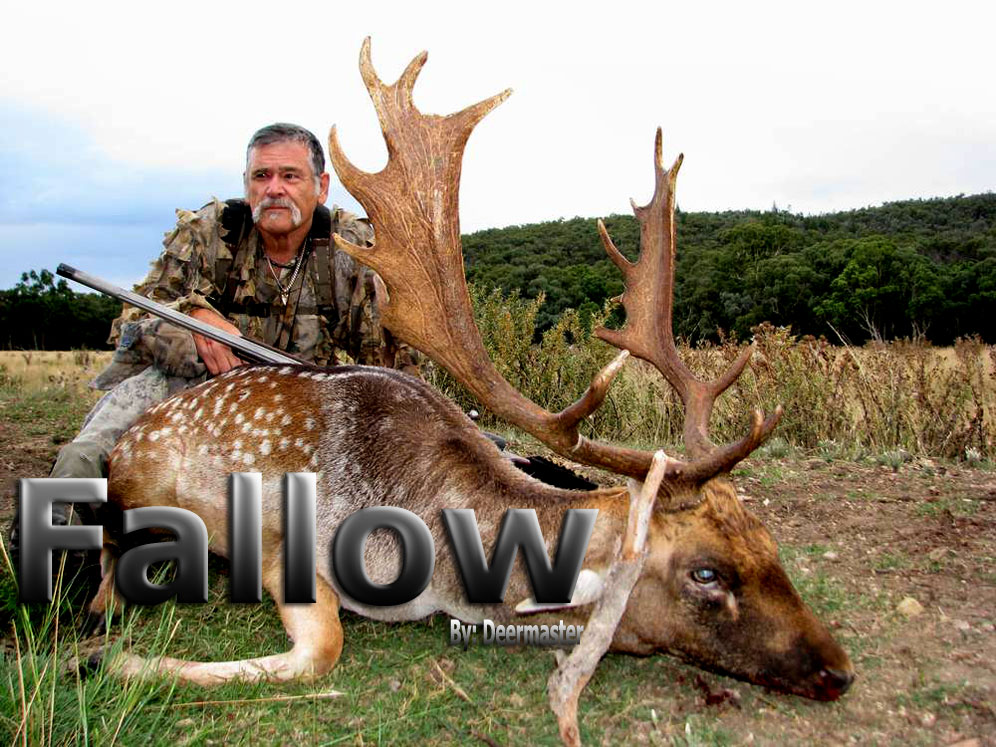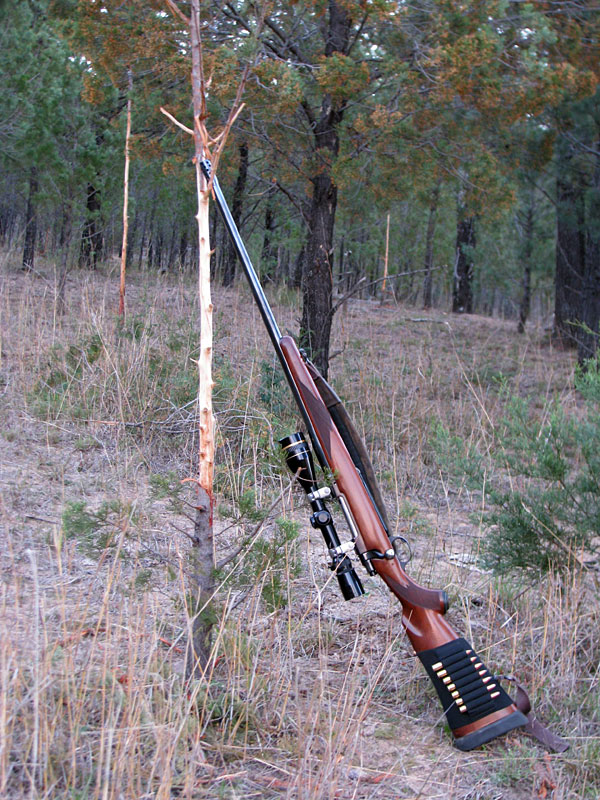|
|
|
Fallow deer are
a most beautiful animal to my way of thinking and many of my friends think
the same. The unusual growth of their antlers that palm is one thing that
sets them apart from all other deer species in Australia. I just love the
way they prong away at times, just bouncing on all four feet together like
they have springs in their feet and look as if their on a Pogo stick. The
way their tail flares up and that beautiful black on white heart that
stands out as they move away from you just looks fantastic. Then the deer
themselves are a very pretty deer and their colors can be quite varied as
you can get white, black, red and menil in their coloring. Then of course
their antlers can be so different in shape from animal to animal that they
all have their own distinctive shape. The grunting, snorting noise they
make when rutting is a sound that I never grow tired of, I just love them. Fallow deer (Dama Dama) are in my opinion nearly petite when compared to our other deer species. The male is called a Buck and the female is called a Doe, their young are called Fawns. The male or buck will weigh up to and around the 95kg mark and stand around 85 to 95cms high at the shoulder, the female or doe is a lot lighter weighing in at around 45kgs and stands around 75cms at the shoulder. I have noticed that in the cooler more southern climates they seem to fill out more and be a bit heavier than the ones that we mainly hunt in SE Queensland and Northern NSW. Fallow, like the red deer have a breeding cycle that lets their fawns be birthed at one of the more favorable times of the year which is in early summer. Their gestation period is around eight months so you could make a safe bet that early April will be the peak of the rut. So fawns will start to be born any time from early December to January. The actual rut is really governed by when the does come into oestrous and usually lasts for around four to five weeks and sometimes shorter or even longer depending on the weather which I do believe has a very big bearing on just when the rut will start. This last year the rut was all over the place and a fallow buck shot last weekend( 30th May 2010) still appeared to be in the rut stage with a swollen neck and large bulb in his throat and he was attending five does. Fallow bucks have unusual antlers in that
they have the normal brow tines then they have the trey tines and then the
antlers palmate into a large flat blade that can have numerous points
along the blade and at the bottom rear of the blade they have what is
called a guard tine. Some of these palms as they are called are long and
wide with points all the way up their outside edge, others have a deep
cleft in the palm which to some people and some scoring systems is
undesirable, but to me it just makes them that little bit more unusual and
different. Fallow bucks are very aggressive fighters and I have seen
bucks dead and near dead from the injuries sustained from their rutting
battles. Often they will break tips off the points of their antlers and
sometimes even the whole antler or a whole palm is broken off. Imagine
the force that they must hit and twist onto each other to inflict these
serious injuries and break those antlers. Itís amazing to think that each
year at around the end of September or early October the buckís antlers
fall off and then almost immediately start to grow again. By February the
antlers are fully grown but are still in soft velvet. This is a soft
velvety substance that covers the antler and gradually hardens. When in
velvet the antlers are easily bent or broken and a damaged antler will
grow in unusual shapes, if the antler is damaged at the pedicel, which is
the base below the coronet, often that antler will never grow properly
again but that buck could still sire good fawns that will grow to be good
bucks in the future. As the velvet hardens it gets itchy and the bucks
rub them on small trees and bushes scraping the velvet from them and in
turn dying them with the saps and dyes from the trees they rub on. If you
were to feel the antlers of a buck when in full velvet they would be very
warm to touch with the blood coursing through them. Itís a really amazing
thing that nature does and if you notice the antlers falling off coincides
with the birthing of the fawns so it must be just Mother Natureís way of
stopping the expectant mothers getting hurt with an accidental hit from an
antler. That isnít a proven thing at all itís just the way I myself look
at it. During the rut, the bucks
find a suitable spot that is usually under a low tree branch and with some
thick cover nearby. He will then scrape the dirt with his fore hooves and
make a number of shallow depressions which we call scrapes. He will then
urinate in the scrapes and roll in them, digging his antlers and face into
the urinated soil. He lifts his head and tickles his antlers on the low
overhanging branch and ejaculates on himself and rolls some more. Then he
will rub his face against a number of trees in the area leaving scent from
his pre-orbital glands that are just below his eyes, he will also thrash
the trees with his antlers twisting and turning the small branches and
rubbing his antlers up and down the tree trunks tearing the bark off them
(I have actually watched them do this on several occasions) By doing these
things he is marking his turf so to speak, these territorial markings can
be recognized by other bucks in the area. He will then try his best to
entice the does to his stands and defend them against all comers to the
death if necessary. The bucks will start to croak or grunt and be very
vocal which can often be their undoing if there is a hunter nearby. There are strict seasons in some states and in others there are none, but in saying this even though it might be legal to shoot them, we try to leave the deer alone during the later stages of the doeís gestation period. Fallow deer feed mainly in the early morning and late afternoon, plus they feed at night especially on the farmers pastures which makes them somewhat of a pest at times and often they are shot on sight. At night their eyes stand out like saucers and they are easily shot even though this is not sporting. It is also illegal to spotlight deer in some states. Fallow will feed in open country but usually like to have some thick cover nearby in which to escape if threatened. Their eyesight is very good as is their sense of smell and often that slight little breeze upon your back or that ever so slight movement will see your stalk come undone. Fallow deer seem to be able to blend into any sort of terrain no matter whether they are white, red, black or menil and can just about appear or disappear right before your eyes. The meat from the fallow is very good to eat and is very lean and full of iron and other nutrients that are great for a healthy lifestyle. We often eat the venison as it is called, either as steak, mince, and roasts or corned as is silverside. The meat is very rich and too much if your not used to it will usually go through you pretty quickly. To sum up the fallow deer is a very worthy game animal and will make a great trophy to hang on your den wall. Ted Mitchell Snr
Footnote: Check with the local laws of the state in which you wish to hunt fallow deer to find out if and what the seasons are and all relevant legalities. Suitable calibers with which to hunt fallow deer in the authors view should be no smaller than a .243 and range upwards from there to however large a calibre you feel comfortable and confident with. Good hunting TMS |






